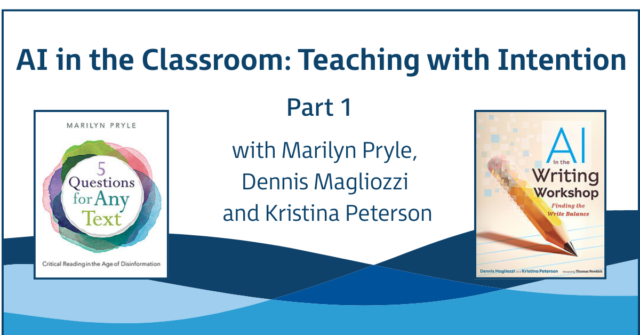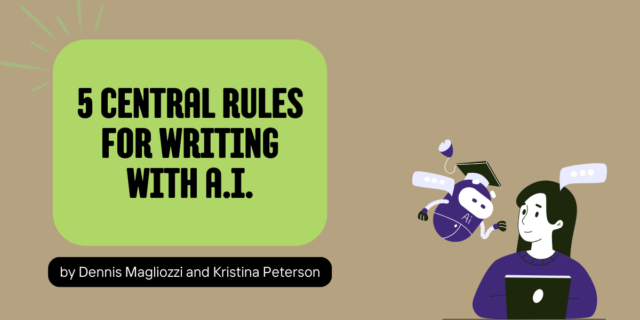
Standing in front of a writing class, we often witness a familiar scene: a student staring at their blank notebook page, pencil in hand, caught in a moment of uncertainty before words begin to flow. These moments of productive struggle are crucial. They are the very moments where learning takes root.
For students, the temptation to turn immediately to AI is strong. After all, why wrestle with word choice when ChatGPT can generate five alternatives instantly? But this immediate gratification comes at a cost we can’t ignore: the ability of our young writer’s to think for themselves. Even those of us who are using AI in our classrooms struggle with the uncertainty of timing and implementation. Besides using it for a brainstorming session, when and how to implement it along the writing journey takes patience. Knowledge of your writer’s needs is paramount.
The struggle with writing isn’t just an inconvenient part of the process. It’s essential.
As workshop style teachers, we’ve always known that the magic happens in the messy middle. This is all the more reason we need to be very intentional about when and how we introduce AI. Our role in the writing workshop isn't to eliminate struggle, but to help students understand its value. By allowing them to wrestle with their ideas first—before turning to AI—we give them the chance to build the resilience, creativity, and confidence that make them not just better writers, but better thinkers. AI can play a role in the process, but it should be implemented deliberately along the way.
Ideal Interaction
Let’s consider what we would refer to as an “ideal interaction” with AI. During a writing workshop, Lila identified her ending as the place she wanted feedback. In the final two lines of the poem, she lost the rhythm and flow she had established earlier in the piece. But the idea she wanted to end the piece with was excellent. Enter AI. The time had come to share a SchoolAI bot already trained for this writing assignment. We worked together to prompt the bot for three suggestions on how she might revise the ending of her poem. We discussed what we did and didn’t like for suggestions, and even found ourselves saying, “Ooh, I like that idea.” And that was it. As simple as that. The struggle over “Where do I go next” was solved, but the struggle to achieve her ending remained as she progressed to her final draft.
While on their own, some students might be tempted to use AI to generate entire poems, we're also seeing students make more nuanced choices. Ayla, after crafting her poem through traditional methods - quick writes, mentor text study, revision - turned to AI for a specific purpose: title brainstorming. She knew her title needed to better introduce her theme, so she used AI as one tool in her toolkit, not as a replacement for her own creativity.
Then there's Eliza, who, in her final reflection wrote that she used School AI as a collaborative brainstorming partner:
| The AI Sidekick had a very big hand in the writing of my poem. I asked what I could do to strengthen and lengthen my poem, and I was very happy with the results that I got from it. Though I did not take any lines directly from the bot, it is what initially gave me the idea of using an extended metaphor in my poem. |
Each of these examples demonstrates how AI can serve as one voice in a larger conversation, helping to expand possibilities while still maintaining the writer's authentic voice. When we invite AI into the writing process students and teachers enter into a collaborative struggle. The teacher struggles over when, where, and if to implement AI. The student struggles over how to implement the feedback. When students are invested in the writing process, when they've done the hard work of finding something meaningful to say, they approach AI thoughtfully - as a targeted tool like Ayla or a creative collaborator like Lila and Eliza. They have learned to struggle in a way that makes them decision makers throughout the writing process. This lesson is what we set out to achieve in the writing workshop. AI can act as a deliberate part of that process. In the end, our goal isn’t to eliminate the productive struggle -- but to empower students to own it.



